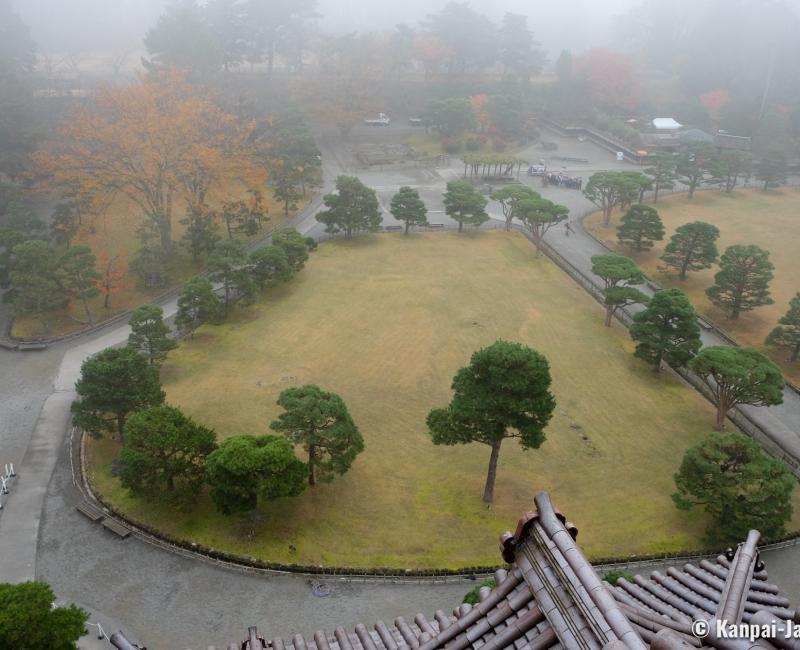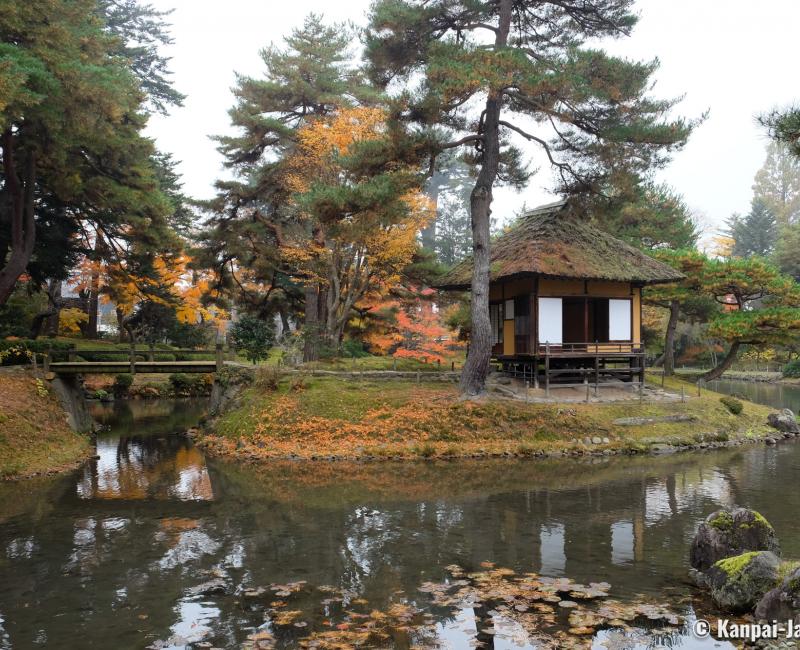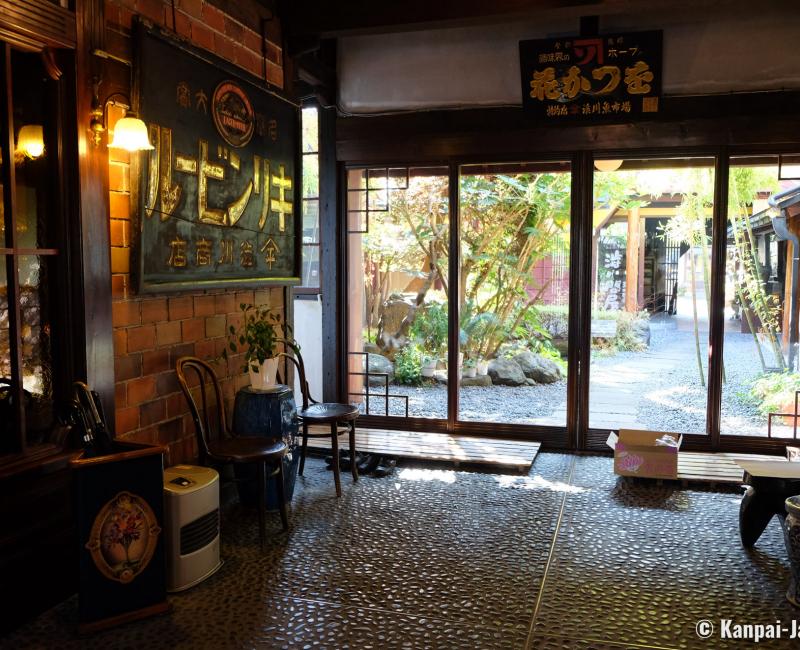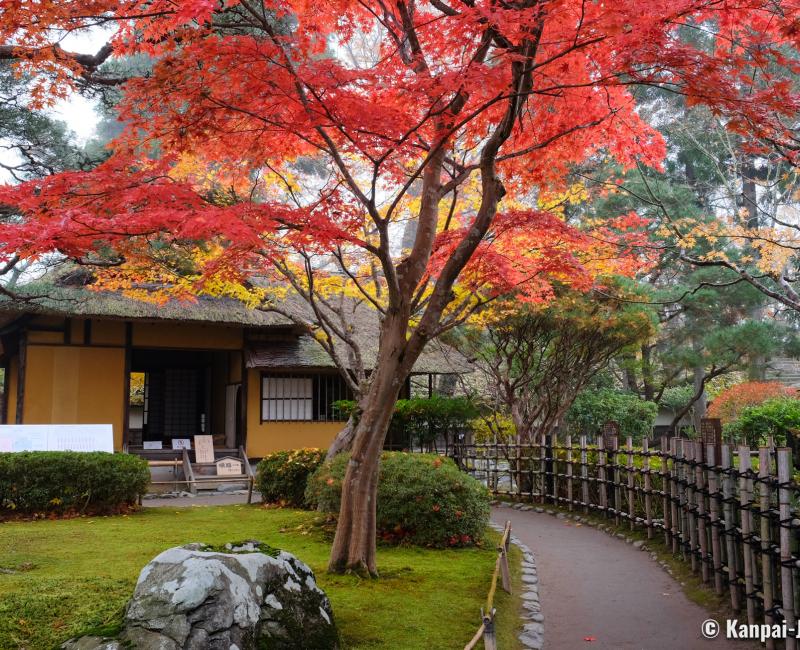Aizu-Wakamatsu
The Castle Town of the Samurai Era in Fukushima
Aizu-Wakamatsu is a city nestled in the mountains in the west of Fukushima prefecture, in Japan’s Tohoku area. Once the former feudal capital of Aizu domain, the city has become a touristic destination renowned for its castle and samurai clans’ heritage. Amateurs of retro shopping will also enjoy the local traditional craftsmanship.
About 3 hours by train 🚅 from Tokyo station, Aizu-Wakamatsu is an interesting introduction to Fukushima prefecture and more broadly to northern Japan. The city is surrounded by grandiose natural landmarks such as Lake Inawashiro, Mount Bandai, and the marvelous Oku-Aizu Valley. Outdoor activities are plenty, from skiing in winter to long hikes in summer.
Aizu-Wakamatsu’s downtown is also worthy of interest thanks to several places that are reminders of the city’s past glory as Aizu domain’s samurais’ capital during the Edo period (1603 – 1868). Let’s have a closer look at the sightseeing possibilities.

The iconic Tsuruga Castle
Tsuruga Castle 🏯 (or Aizuwakamatsu-jo) was inaugurated in 1384 by Ashina Naomori. Several daimyo lords of various clans would rule the domain over time. The Matsudaira clan settled in the domain during the Edo period and ruled for several generations until 1869 and the Boshin Civil War, consequence of the restoration of the imperial power in the early Meiji Era. Considered one of the last bastions of samurais faithful to the Tokugawa shogunate, the castle was dismantled in 1874 by the emperor’s government.
The present days five-story keep, with white walls and red tiles roofing dates back to 1965. The reconstructed castle shelters a museum dedicated to its history and displays some typical feudal warriors’ gears, such as swords and kabuto helmets. On the upper floor, an outdoor observation gallery was arranged and offers a beautiful panorama on Aizu-Wakamatsu on clear weather days.
The park at the foot of the castle is large and still displays the remnants of the stronghold that can be discovered in a pleasant walk. Cherry trees 🌸 and maple trees are abundantly growing in this green space and guarantee beautiful colors in spring and in autumn. Lastly, a specific enclosure is home to a traditional teahouse named Rinkaku.

Oyakuen, the medicinal herbs garden
About ten minutes’ walk from Tsuruga Castle, it is highly recommended to visit the lovely Oyakuen seigniorial garden. Specialized in medicinal herbs, it was re-designed in 1696 in a typical Japanese promenade garden, around a main pond, small stone bridges and miniaturized waterfalls. Designated National Place of Scenic Beauty in 1932 and opened to the public in 1953, Oyakuen is a beautiful example of a garden built during the Tokugawa shogunate.
Several tea houses are also arranged in the garden, such as:
- Rakujutei, a small traditional kiosk on the pond’s central inlet, and,
- The large house Ochaya-goten, that was initially composed of three rooms: Kaminoma reserved to the feudal lord, Tsuginoma and Hikaenoma. In 1882, the room Matsunoma, as a reference to the Matsudaira clan who reigned over Aizu for a long time, was added as well as a two-story wing.
Oyakuen is particularly beautiful in autumn, when the koyo 🍁 foliage of the maple trees spread in flamboyant red hues throughout the grounds.

The shopping avenue Nanuka-machi Dori
The scenery changes around Nanukamachi JR station, in Aizu-Wakamatsu’s shopping neighborhood characterized by older times architecture, with:
- Old Japanese warehouses named kura, that now accommodate various local shops, and,
- More recent buildings, with western-style fronts testimony of Japan’s opening during the Taisho era in the early 20th century.
In the main avenue Nanuka-machi Dori vintage shopping amateurs will find a comprehensive overview of the local craftsmanship: hand painted candles (e-rousoku) that are decorated with seasonal flowers at Hoshiban, Aizu lacquerware, as well as cotton fabric and its manufacture open to the visit.
As for the local gastronomy, it is represented by sake 🍶 at Suehiro Kaeigura brewery, where it is possible to learn about the Japanese alcohol’s brewing process in a guided tour visiting five kura converted into sake breweries.
Keen visitors might notice tombstones, that seemed abandoned, interspersed between souvenir shops and restaurants. Most of them are affiliated to Amida-ji temple whose grounds lies at the entrance of the district. More than 1,300 warriors of the Aizu clan, who died during the last siege of the castle are entombed here. They used to be protected by a great statue of Buddha, but it was used as war effort material in 1939-1945.

The best of Aizu-Wakamatsu in a few places
Aizu-Wakamatsu is an easy access by train, bus, or car 🚙. From Tsuruga Catsle’s Park, that is the ideal starting point to discover the city, one can go:
- Toward south, to walk Ouchi-juku main street: this former post house on the Nishi Kaido road connected Aizu Wakamatsu to Nikko during the Edo period and is now renowned for its preserved thatched roof architecture.
- To the north-east of the city’s downtown, to discover the original Sazaedo pavilion, and then climb to the top of Mount Iimoriyama: there contemplate the tombs of the nineteen young warriors of the Byakkotai group, who committed suicide after they (wrongly) thought that their castle was burning and seized by the troops of Meiji emperor in 1868.
- To the east, to walk in Oyakuen garden, then visit the beautiful large reconstitution of the samurai house Aizu Bukeyashiki, and lastly go to Higashiyama Onsen ♨️ to stay one night in a lovely ryokan inn.
We recommend staying one to two days for a better immersion in this Japanese city’s history at the times of the samurai.

